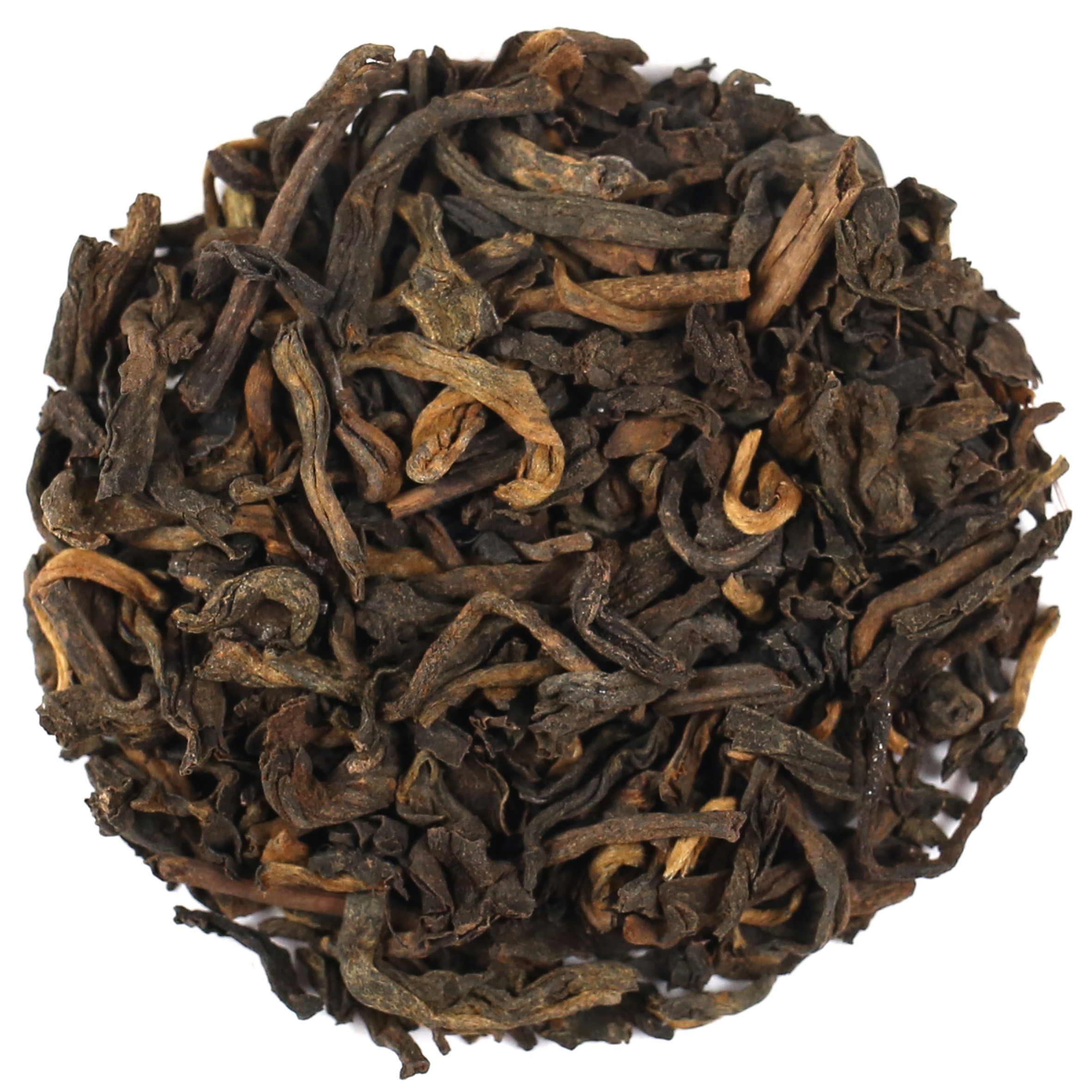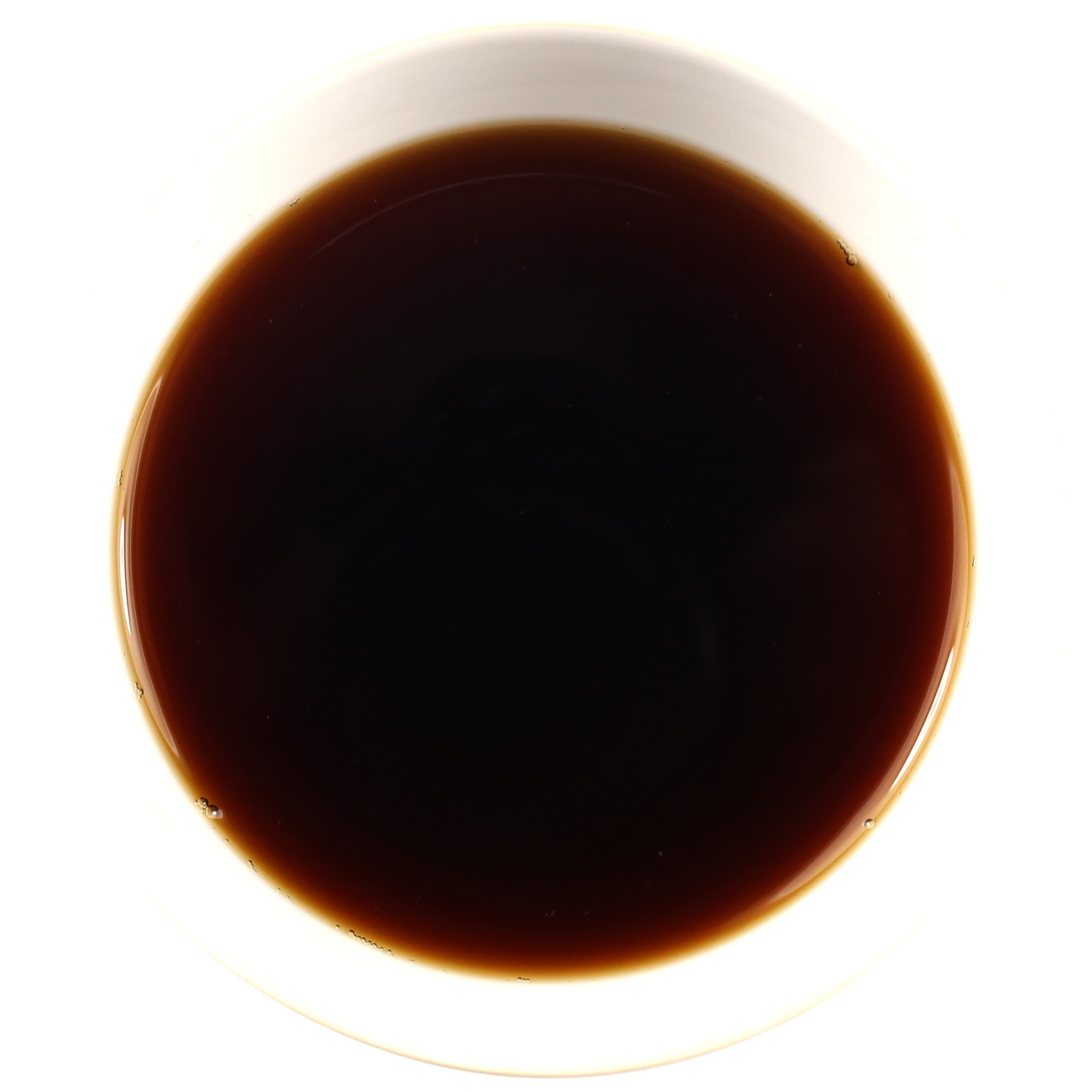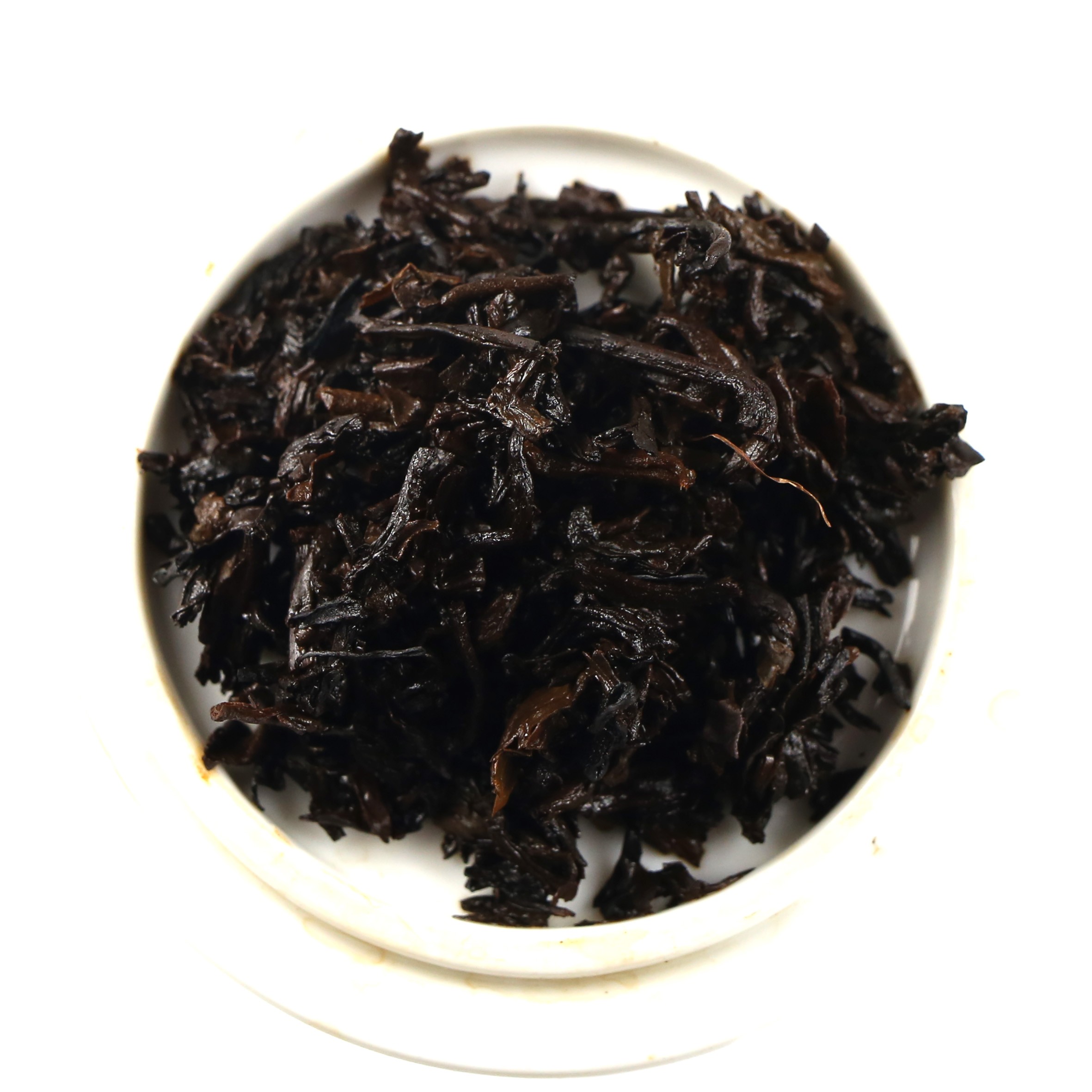Black Tea Brewing Guide

1 Teaspoon
Add 1 teaspoon per person and one for the pot.

95⁰c - 100⁰c
Boil using fresh water, at a temperature of 95⁰ - 100⁰c.

3 - 5 Mins
Steep for 3-5 minutes, depending on personal preference
About Product
-
Product Description
Like a fine wine, Pu erh Tea gets better with age. It is the product of a unique processing method whereby the oxidised leaves undergo piling and heaping, which ultimately prolongs fermentation. The purpose of this is to manipulate conditions to simulate a natural ageing process, resulting in a Tea with a highly-prized complexity, depth and smoothness.
Similar to Champagne from the Champagne region of France or Darjeeling Tea from the Darjeeling district of India, Pu erh grows exclusively in Yunnan province, China.
This ensures its authenticity, as well as its quality and consistency. Our Pu erh, in particular, offers a sweet, mellow taste. It also, according to the latest scientific research, comes with Pu erh Tea Benefits.
Evidence indicates that any type of Black Tea, including this one, can support one’s wellbeing in a multitude of ways. However, Pu erh goes above and beyond with its health potential by improving digestion and promoting weight loss.
Furthermore, some have suggested that it can even relieve hangovers! Pretty impressive for your new favourite brew, wouldn’t you agree?
What is Pu erh Tea?
It’s difficult to imagine a more extraordinary brew than Pu erh (pronounced “Poo-air”), a Tea of several unusual qualities. It originates from Yunnan, China, its name deriving from the provincial city of Pu’er.
Often, it comes in a compressed ‘Tea-cake’ form, which often enhances the flavour – as well as its price. Today, a 1950s era 357-gram Red Chop Pu erh Tea ‘disc’ can sell for over $10,000 USD.
But what, exactly, makes it so special and sought-after? It’s worth noting that Yunnan’s near-perfect growing conditions contribute significantly to the character of this remarkable infusion. However, it’s what happens at the factory that has the greatest influence.
Following the usual stages associated with Black Tea, Pu erh undergoes what is essentially an additional period of fermentation.
Workers call this stage “wòdūi” (“wet-piling”), which involves piling, dampening and constantly turning the leaves in a manner similar to composting. This method of production was only perfected in 1973, with Pu erh Black Tea (also known as “Shou”) reaching the market in 1975. However, its Green Tea counterpart, Sheng Pu erh, has existed for centuries.
A Brief History of Pu erh
Sheng Pu erh Tea might, according to some sources, date back to the Chinese Han dynasty (206 BCE – 220 CE). Yet despite this possibility, other records suggest it only came into existence during the Ming dynasty (1368-1644) or Qing dynasty (1644-1912).
It’s likely we’ll never know for sure, although historians have at least one theory as to “how” it first surfaced.
It’s possible that travelling merchants once compressed Loose Leaf Tea in order to make it easier to carry. As they ventured over vast uneven terrain, however, a chemical change in its structure took place.
The leaves changed colour from green to amber and then to dark teak. The taste, meanwhile, became livelier, richer and smoother. And so Sheng Pu erh came to be – or so it is thought!
Pu Yu (1906 – 1967), the last Emperor of China, famously drank Dragon Well Tea in the summer and Pu erh in the winter. Now, you can, too, with this our nutritious, invigorating infusion.
Best of all, we pack it fresh to order here at our Pluckley-based factory, nestled within the stunning vistas of the Kentish countryside. What’s not to like?
Useful Information
Type of Tea: Black Tea.
Origin: Yunnan Province, China.
Brewing Instructions: Brew using freshly boiled water. Infuse for 3 to 5 minutes.
How to Serve: Some add milk. Most, however, serve black.
Tasting Notes: Embrace distinctly sweet notes with earthy, woody hints.
Colour in Cup: Coppery liquor, dark in tone.
Health Benefits of Pu erh Tea
A Chinese study conducted at Kunming Medical College suggests that Pu erh Tea could lower “bad” LDL cholesterol. It saw 86 participants with unusually high levels of blood cholesterol split into two groups.
The first group of 55 volunteers drank this beverage three times daily. In contrast, the second group received an unnamed cholesterol-lowering drug.
The results showed a 64.29% reduction in “bad” LDL cholesterol in the Tea-drinking group. The drug group, meanwhile, had only a minimal improvement at 66.67%.
While the cholesterol-lowering drug was proven to be more effective, the research also established that Pu erh could at least help.
-
Delivery Information
We offer reliable delivery services through Royal Mail to ensure that your orders reach you on time.
Here are the main points you should be aware of:
- Standard UK Delivery: £3.95 excluding delivery charge.
- Delivery Times: Orders are processed and dispatched within 2-5 working days but they may take longer during busy times. It is worth noting that all our orders are packed by hand in order to maintain the quality.
- Free Delivery: We are delighted to provide free shipping for UK orders over £35*. Moreover, customers from Europe can enjoy free shipping for any purchase above €75*. Furthermore, we offer free delivery in the USA for all purchases exceeding $125*. Please note terms and conditions may apply.
- Tracking: When your package is sent you will receive a tracking number via email so as to keep tabs of its progress.
International Shipping
We do ship worldwide meaning our products can be accessed by anyone around the world.
Here are some important details:
- Delivery Times: International deliveries vary based on destination, generally taking between 7-14 working days.
- Shipping Costs: International shipping costs are calculated at checkout based on your location and weight of your order. View full delivery charges for your location.
- Customs and Import Duties: Remember customs or import duties may exist depending on regulations in your country; these charges are borne by the customer.
Returns Policy
Your satisfaction is our top priority, however if for any reasons you’re not completely happy with your purchase, simply follow our returns procedure:
- Eligibility: Items returned within 30 days of receipt must remain unopened and in their original condition.
- Process: In order to return an item contact our customer service department using your unique order number after which detailed instructions will be given concerning returning them back to us securely.
- Refunds: Our aim is to refund you within 5-7 working days upon successful reception of returned goods. The refund amount will be credited to your original payment method.
For any other Enquiries or help please contact our Customer Support Team always at your service.
-
Product Reviews

 Loose Leaf Tea
Loose Leaf Tea Pyramids
Pyramids Tea Bags
Tea Bags Africa
Africa Assam
Assam Ceylon
Ceylon Chinese
Chinese Darjeeling
Darjeeling European
European Indian
Indian Japan
Japan Nepal
Nepal South East Asia
South East Asia Ayurveda Tea
Ayurveda Tea Black Tea
Black Tea Chai Tea
Chai Tea Flowering Tea
Flowering Tea Fruit Tisanes
Fruit Tisanes Green Tea
Green Tea Herbal Tea
Herbal Tea Matcha Tea
Matcha Tea Oolong Tea
Oolong Tea Organic Tea
Organic Tea Pu erh Tea
Pu erh Tea Rooibos Tea
Rooibos Tea White Tea
White Tea Asian Coffee
Asian Coffee Caribbean Coffee
Caribbean Coffee Central American Coffee
Central American Coffee South American Coffee
South American Coffee Coffee Blends
Coffee Blends Decaffeinated Coffee
Decaffeinated Coffee Espresso Coffee
Espresso Coffee Ethically Sourced Coffee
Ethically Sourced Coffee Flavoured Coffee
Flavoured Coffee Organic Coffee
Organic Coffee Single Origin Coffee
Single Origin Coffee Chocolate 1
Chocolate 1 Chocolate 2
Chocolate 2 Chocolate 3
Chocolate 3 Chocolate 4
Chocolate 4 Chocolate 5
Chocolate 5 Chocolate 6
Chocolate 6 Chocolate 7
Chocolate 7 Chocolate 8
Chocolate 8 Chocolate 9
Chocolate 9 Loose Tea Filters
Loose Tea Filters Tea Accessories
Tea Accessories Tea Bricks
Tea Bricks Tea Caddies
Tea Caddies Tea Caddy Spoons
Tea Caddy Spoons Tea Gift Ideas
Tea Gift Ideas Tea Infusers
Tea Infusers Tea Strainers
Tea Strainers




